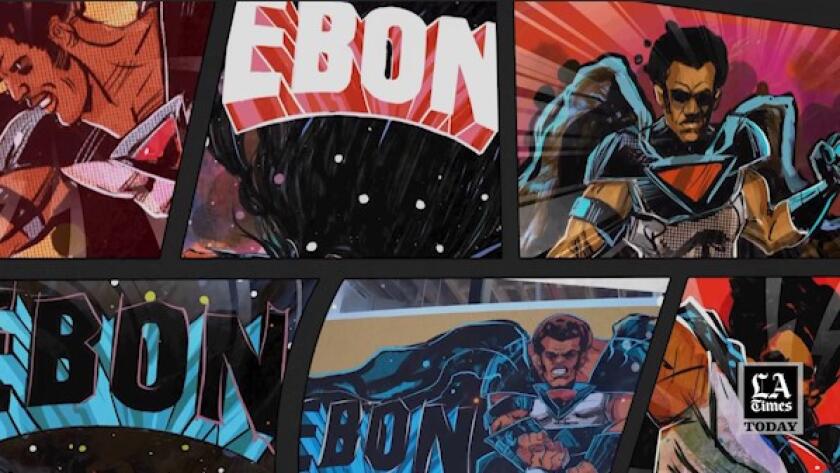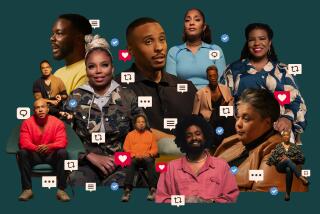How two friends brought back Ebon, one of the first Black superheroes in a comic book
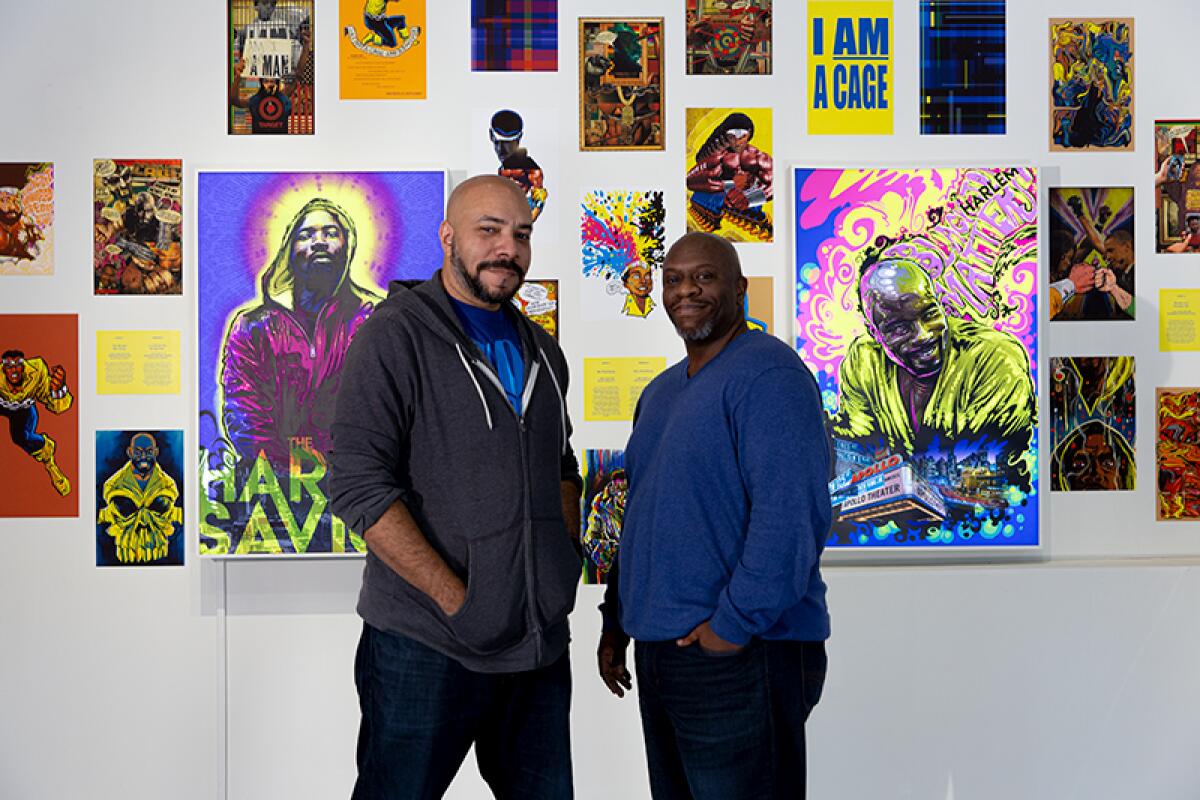
In 1969, Larry Fuller had a game-changing idea. As one of the few Black cartoonists working in San Francisco’s underground comix movement, Fuller created a story that featured one of the first Black superhero characters in a comic: Ebon.
Fuller only published one issue of his comic in 1970, which didn’t sell well at the time. Yet “Ebon: Fear of a Black Planet” became a trailblazing work that paved the way for Black readers from all walks of life to see themselves as limitless. The short-lived comic, published under Spearhead Comics, also helped open the door for Black superheroes in comics.
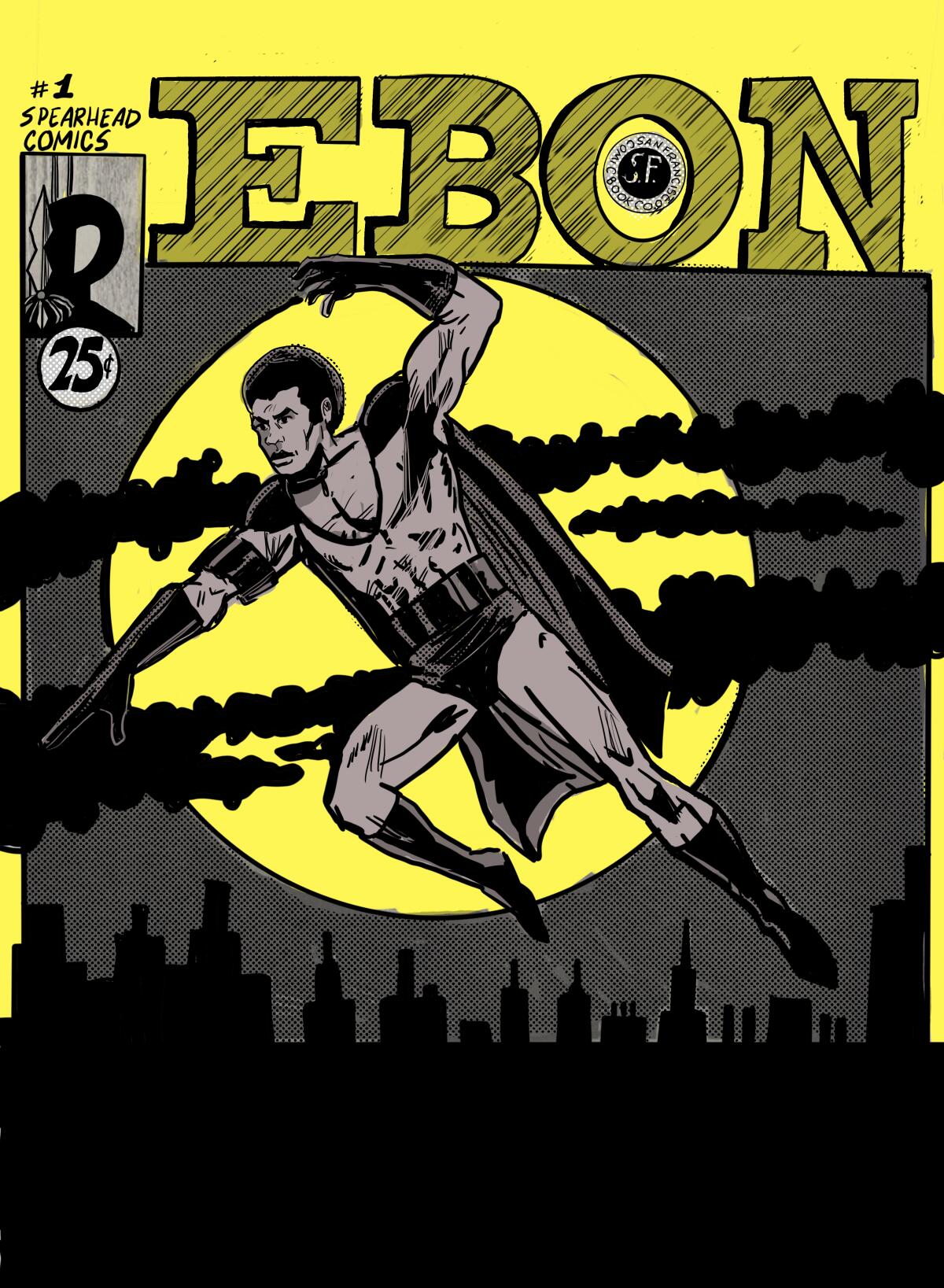
Despite its influence on comics and pop culture alike, Fuller’s work has remained relatively obscure — until Stacey Robinson and John Jennings, the duo behind the art collective Black Kirby, expanded Ebon’s story this year.
John Jennings, a best-selling author, graphic novelist, curator and professor of media and cultural studies at UC Riverside, and Stacey Robinson, an artist and professor of graphic design at the University of Illinois at Urbana-Champaign, dreamed up their shared creative pseudonym, Black Kirby, after discussing the fact that legendary Marvel and DC comic book artist, Jack Kirby, is seldom given the credit he deserves. The pair decided to work on a project that would celebrate Kirby’s contributions to the art form while creating original art rooted in hip-hop and Afrofuturism. Their mutual affinity for Black science fiction comics inspired them to collaborate with Fuller, the original author of Ebon’s story, to update the comic with the likes of digital illustrations, character collages and costumes.
Their work is now on view at the Culver Center of the Arts at UC Riverside through June 19, 2022, at an exhibition that expands Ebon’s lore. The new work is illustrated by Black Kirby exclusively for the show and features pages from the original comic inked by Fuller himself. After the exhibition closes, the team is envisioning additional ways to bring this comic book into the present, where they hope that Ebon’s saga will continue.
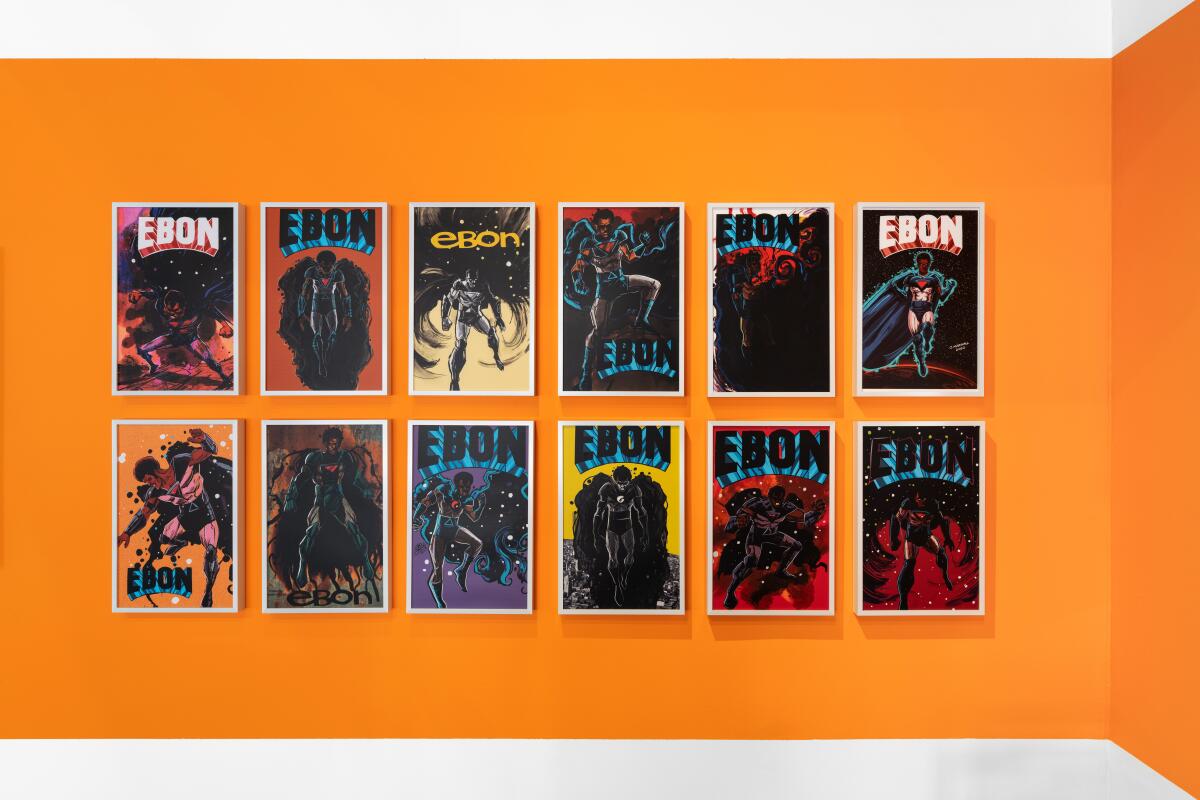
In the original comic, Valentine Jones, a.k.a. Ebon, is an alien hailing from the planet of Nyta, where every resident is Black. There’s a supernatural ancestral power that gives him super-strength, super-speed and flying powers that his predecessor, Jom, also possessed. Despite bearing similarities to DC’s Superman, Ebon uniquely absorbs power from dark spaces. He harnesses energy from these spaces, which then manifest as a black force field emanating from his costume. The force field resembles a cape, but it’s anything but an ordinary garment.
For their updated look at the comic, Black Kirby redefined the “darkness” Ebon culls his power from as a “powerful Black safe space drawing from African traditions, hip-hop, Afrofuturism and more.” Additionally, they implemented a red symbol onto Ebon’s chest that produces an energy he can fight with.
For Black Kirby, the idea of a flourishing Black planet is fantastical when Black bodies are often rendered disposable — particularly in a place like the United States, which has a long legacy of anti-Blackness. That’s why they made a point to ensure that Nyta had a language system, because African languages were lost during the transatlantic slave trade and as Black people were forced to assimilate to English. “When you think about it, this is what every free nation of people have … their own language system,” Jennings says. In a future installment of the comic book, Black Kirby hopes to formulate Nyta’s “monetary system and constitution.”
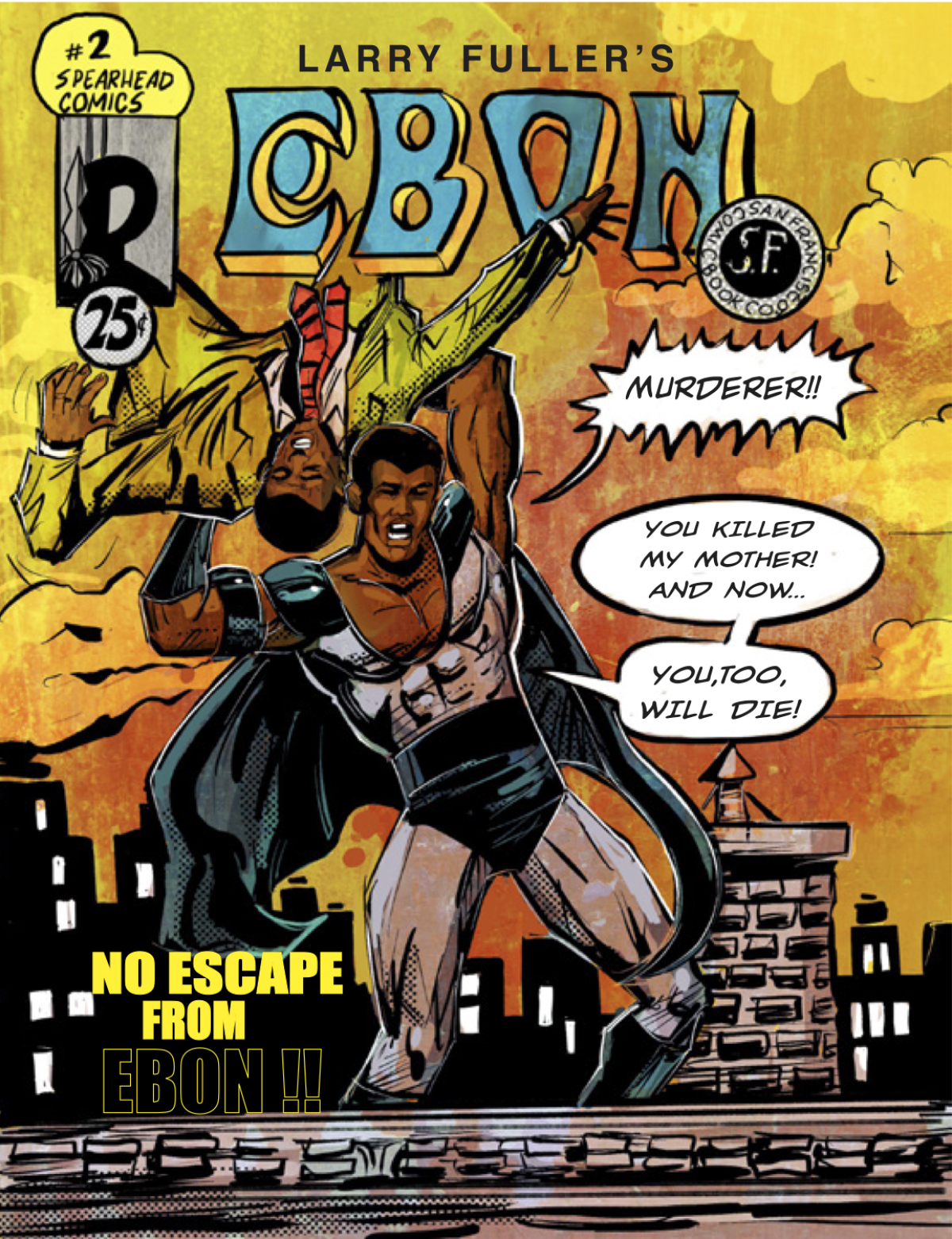
Jennings says it’s important for their collective to “look back and find lost creations and creators,” and show that Black people have “always been making” comic books. For Robinson, working with Fuller was thrilling given “the fact that he’s still with us, he’s still creating,” he says, adding: “[H]e made this pop cultural icon and he’s so humble.” Fuller advised Black Kirby as they organized the exhibit, and remained open to their ideas to expand the world of Ebon he had initially crafted decades ago.
While Nyta fits the “timely” pop culture interest in Afrofuturism, the name “Fear of a Black Planet,” inspired by Public Enemy’s album of the same name, also ignites tension, Jennings adds. “There is a fear of a Black planet,” Jennings says. “It doesn’t matter if it’s a brown planet, if it ain’t white, it’s Black — that’s the way whiteness looks at it. White people are going to become a minority in the next 30 years. It makes us ask: What does it mean to have a Black planet?”
'Ebon: Fear of a Black Planet': A Black Kirby Project
Where: Culver Center of the Arts, 3834 Main St, Riverside, CA 92501
When: Thursday & Friday: 12pm – 5pm, Saturday & Sunday: 11am – 5pm
Contact: (951) 827-4787, ucrarts.ucr.edu
Watch L.A. Times Today at 7 p.m. on Spectrum News 1 on Channel 1 or live stream on the Spectrum News App. Palos Verdes Peninsula and Orange County viewers can watch on Cox Systems on channel 99.
More to Read
The biggest entertainment stories
Get our big stories about Hollywood, film, television, music, arts, culture and more right in your inbox as soon as they publish.
You may occasionally receive promotional content from the Los Angeles Times.
